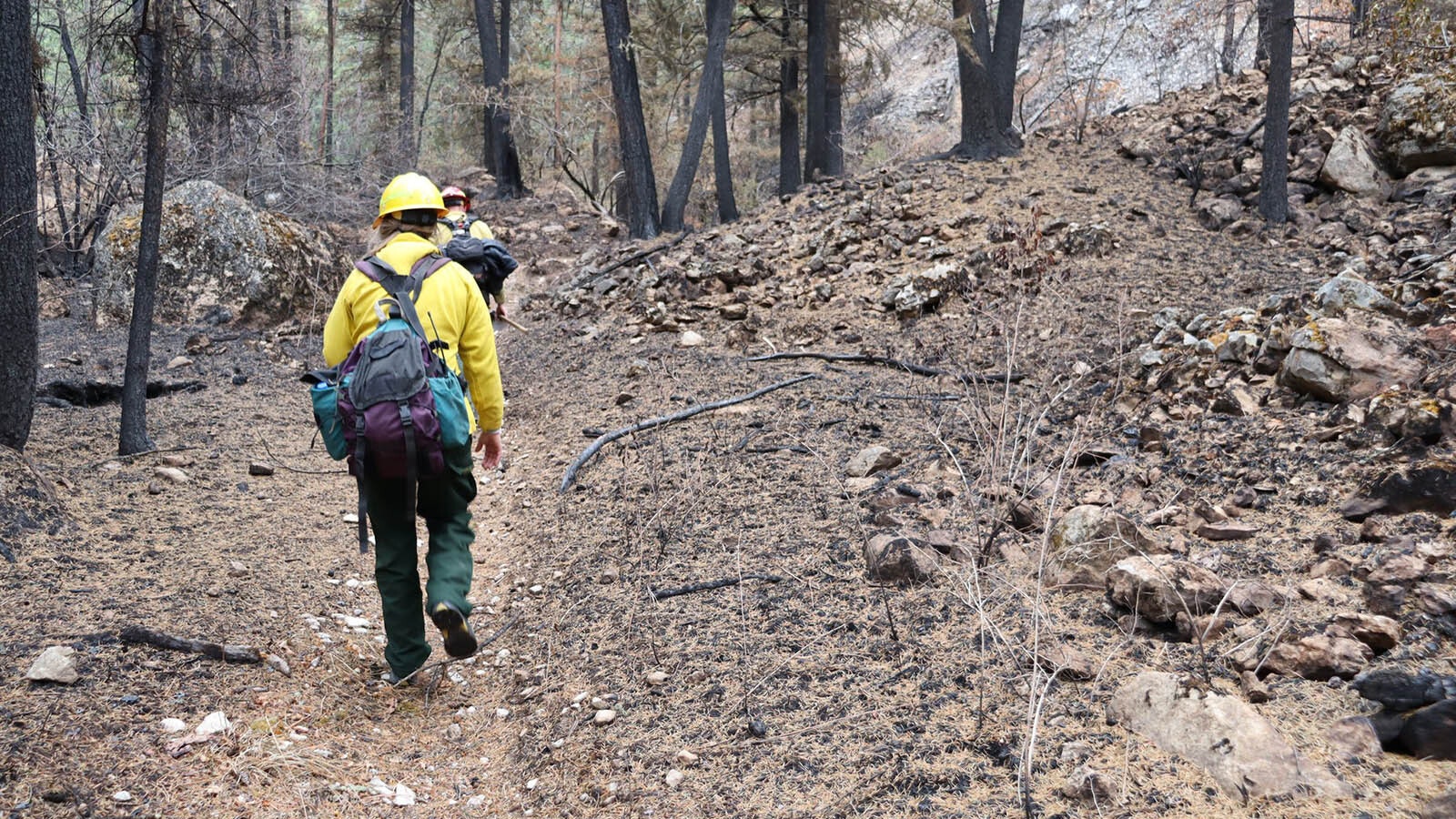Despite a return of warmer weather on Monday, crews battling the 80,270-acre Mullen Fire in the Medicine Bow National Forest were able to make some progress in protecting structures in the path of the flames with the assistance of airborne resources, officials said.
Chris Zoller, operations section chief for the Rocky Mountain Blue Team managing firefighting efforts, said air tankers and helicopters were able to make water and fire retardant dumps on the fire Monday.
Officials had said early in the day that the aircraft would pay a larger role Monday than they did over the weekend, when first winds gusting to 70 mph and then low-hanging clouds restricted flights.
“We anticipate seeing a lot of aircraft today,” Rocky Mountain Incident Management team member Chris Zoller said Monday morning in an update.
In the evening update, Zoller said several air crews were working to prevent the fire’s spread to the south in the face of northwesterly winds.
He added that officials were able to lift evacuation orders for the area from Sodergreen Lake near Wyoming Highway 230 north to Lake Hattie and east of Sheep Mountain, where firefighters were sent to extinguish a spot fire.
Incident Commander Jared Hohn said with the calmer weather, firefighters were able to make progress in protecting structures and infrastructure in the forest.
“We had a really good day of work for our men and women on the fire line,” he said during Monday’s briefing.
As of Monday evening, the fire had affected 80,279 acres, according to fire tracking website InciWeb.
John Peterson, public information officer for the Rocky Mountain Incident Management Team, told Cowboy State Daily that crews were taking full advantage of cooler temperatures and moderate winds seen since Sunday that helped to keep the fire somewhat at bay over the last 24 hours.
Peterson explained that many of the aircraft are able to suck water out of a nearby lake source (Lake Hattie, for example) and drop it onto the fire, making efforts to fight the fire much more efficient than dropping fire retardant on the flames.
“If you think about it, with retardant, an aircraft has to go to an airport, get the retardant, fly away, drop it and then come all the way back,” Peterson said. “It takes so much time. So since we have these aircraft, we can really focus on keeping the fire at bay.”
Since this week’s temperatures and winds will be lower than what was seen last week, when 70 mph winds pushed the fire to grow more than 30,000 acres in a single day, crews can begin focusing efforts on containment later this week, Peterson said.
Protection of the Rob Roy reservoir has been especially critical, as it is the main water source for the city of Cheyenne.
The cause of the fire was still under investigation as of Monday. More than 500 people are currently working to combat the fire.
This story was updated Monday evening to include information from the daily briefing.





